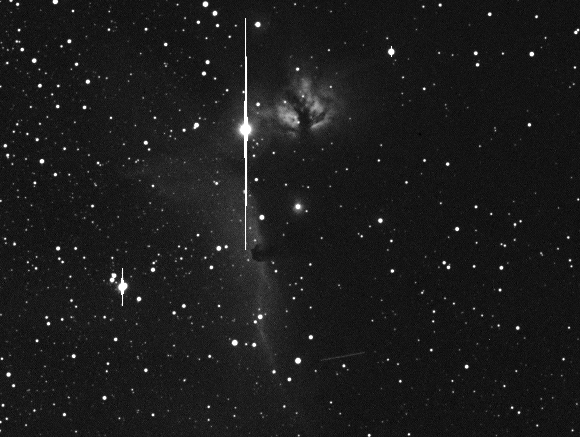The Flame Nebula (NGC 2024) is part of the same expanse of gas that gives us the more well known horse-head nebula. The horse-head nebula is a very faint emission nebula well know because if it's canny likeness to the shape of a horse's head. Both are part of the Orion Molecular Cloud, a star-forming region just below Orion's Belt in the night sky.
 |
| The Flame and Horse-head Nebula seen together with Cluster Camera |
The dark shapes and filaments, which are somewhat separate to the bright areas, are between us and the glowing region and block some of this light, producing intricate details.
 |
| The Flame Nebula imaged with Galaxy Cam |
 |
| A H-alpha filter removes glare from the star. This image is the result of many exposures stacked together. |
Observing tips
- The Flame Nebula is in the NGC catalogue as NGC 2024
- An exposure time of 120 000 ms works well on any filter.
- Use Galaxy Cam for the best detail.
- BVR (colour) works to give a very colourful image.
- H-alpha gives a faint, black and white image, but without star glare.
- Or use Cluster Cam with a Colour or Red filter to capture a larger region.